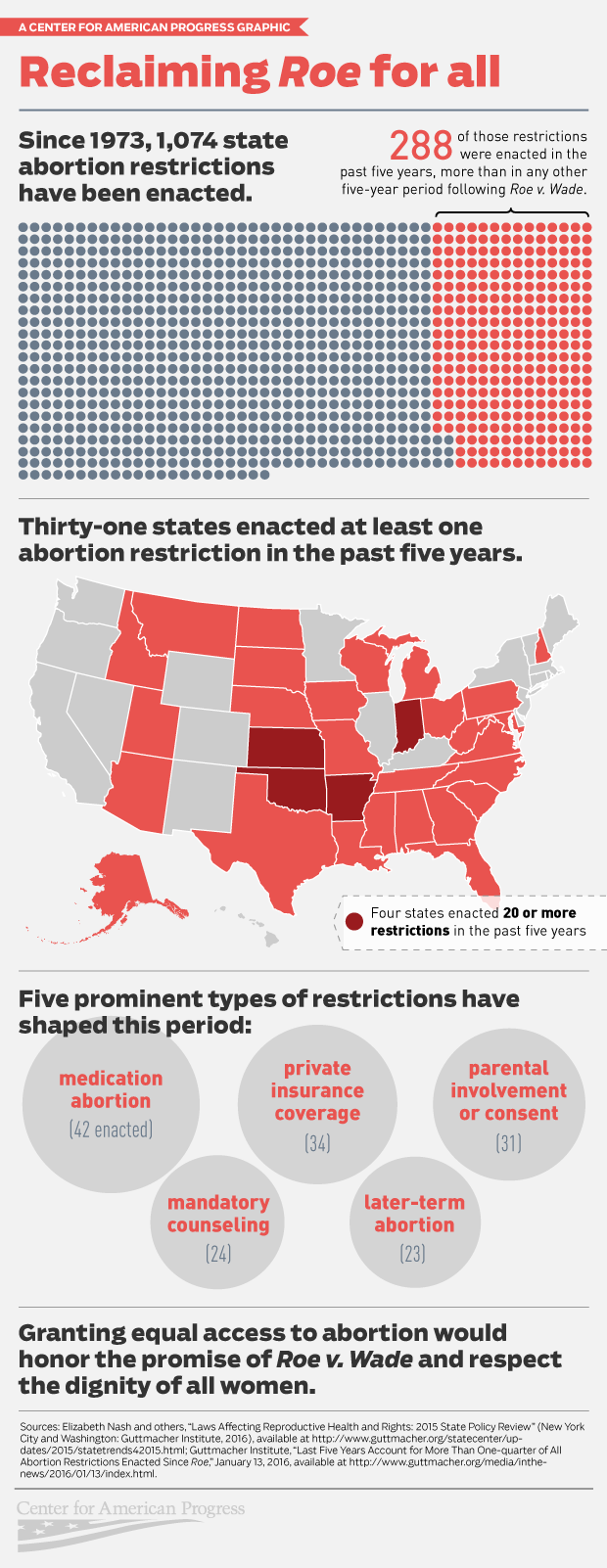On the 43rd anniversary of the U.S. Supreme Court’s historic Roe v. Wade decision—which affirmed a woman’s right to abortion — the Center for American Progress released a column and an infographic examining how decades of state abortion restrictions have prevented many women from fully accessing the right to abortion granted to them in Roe.
Forty-three years after Roe, the absence of women’s access to
the full range of legal reproductive health care services can still
literally be a matter of life and death.
In March 2015, the Supreme
Court will hear Whole Woman’s Health v. Cole, a case challenging Texas’ H.B. 2 — a
law that placed dramatic restrictions on state abortion clinics and
currently threatens to reduce the number of abortion clinics in the
state from 50 to 10 or fewer. Since H.B. 2 was passed in 2013, more than 130,000 and up to 240,000 women
report having attempted to self-terminate a pregnancy without
consulting a medical professional. These staggering figures prompted
some Texas lawmakers to protest the bill on the floor of the state
Legislature by holding coat hangers—a chilling symbol of pre-Roe at-home abortions that often left women maimed, infertile, or dead.
Center for American Progress
Anti-choice legislators have constructed a latticework of abortion
restrictions and bans in state legislatures that has prevented Roe v. Wade from being a reality for everyone.
More state abortion restrictions have been enacted in the past five years than in any other five-year period since Roe
was decided. Such restrictions push safe and affordable abortion care
out of reach for those who already face significant barriers to quality
health care, such as low-income women; immigrants; youth; women of
color; and lesbian, gay, bisexual, and transgender, or LGBT, people. All
women deserve reproductive health policies that respect their moral
decision-making and safeguard their health and well-being, regardless of
age, gender, socio-economic status, or other factors. In order to
equalize health outcomes for all—including access to abortion
services—the nation’s lawmakers must heed the original intent of the Roe v. Wade decision and restore to women their basic legal rights.

No comments:
Post a Comment